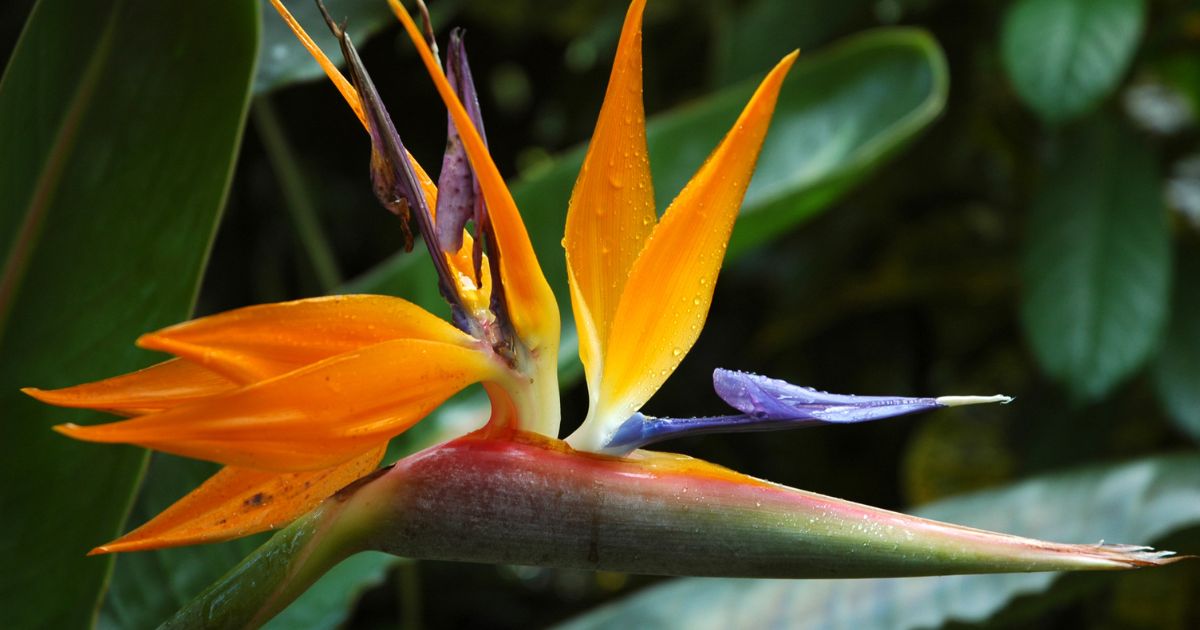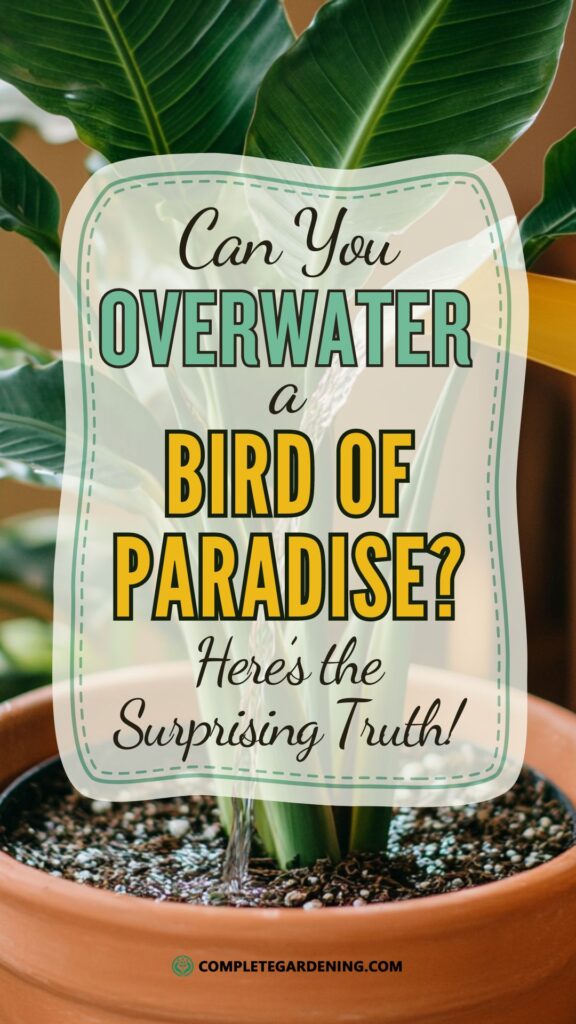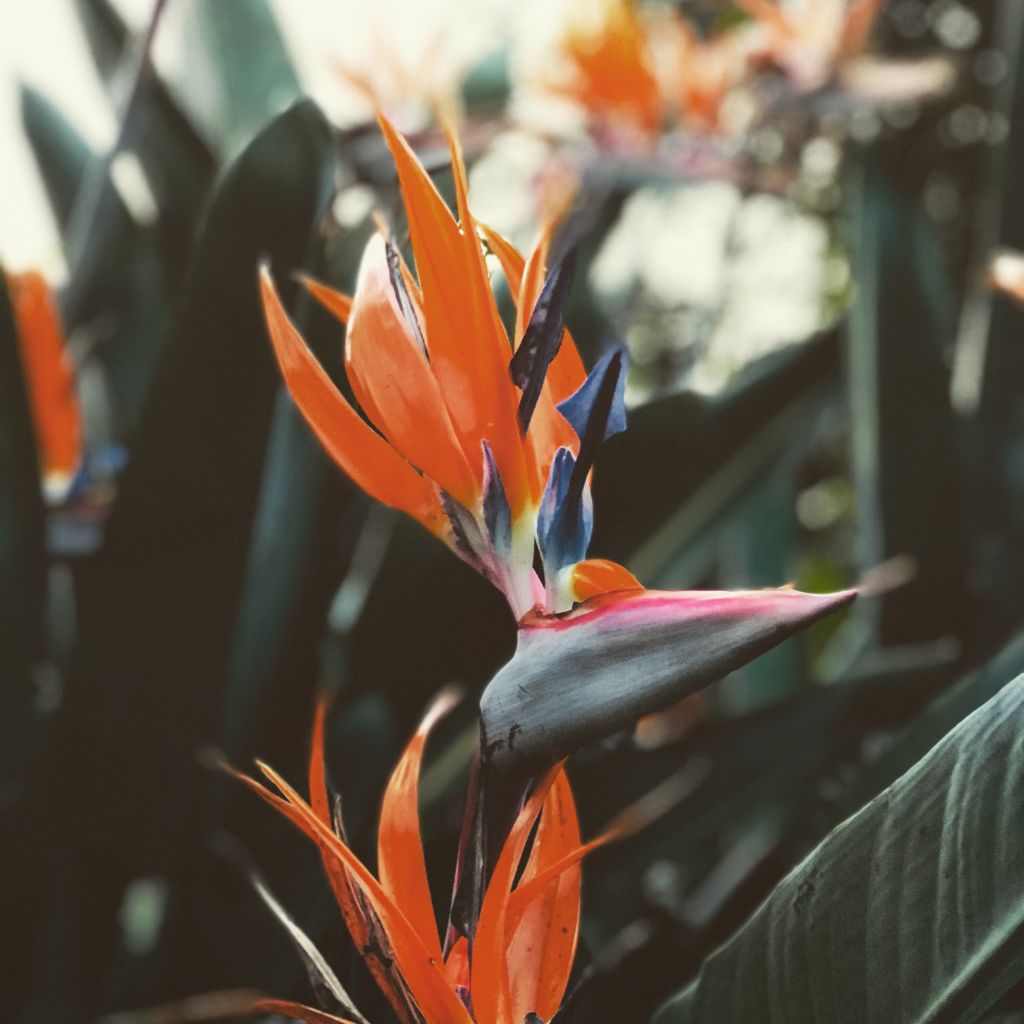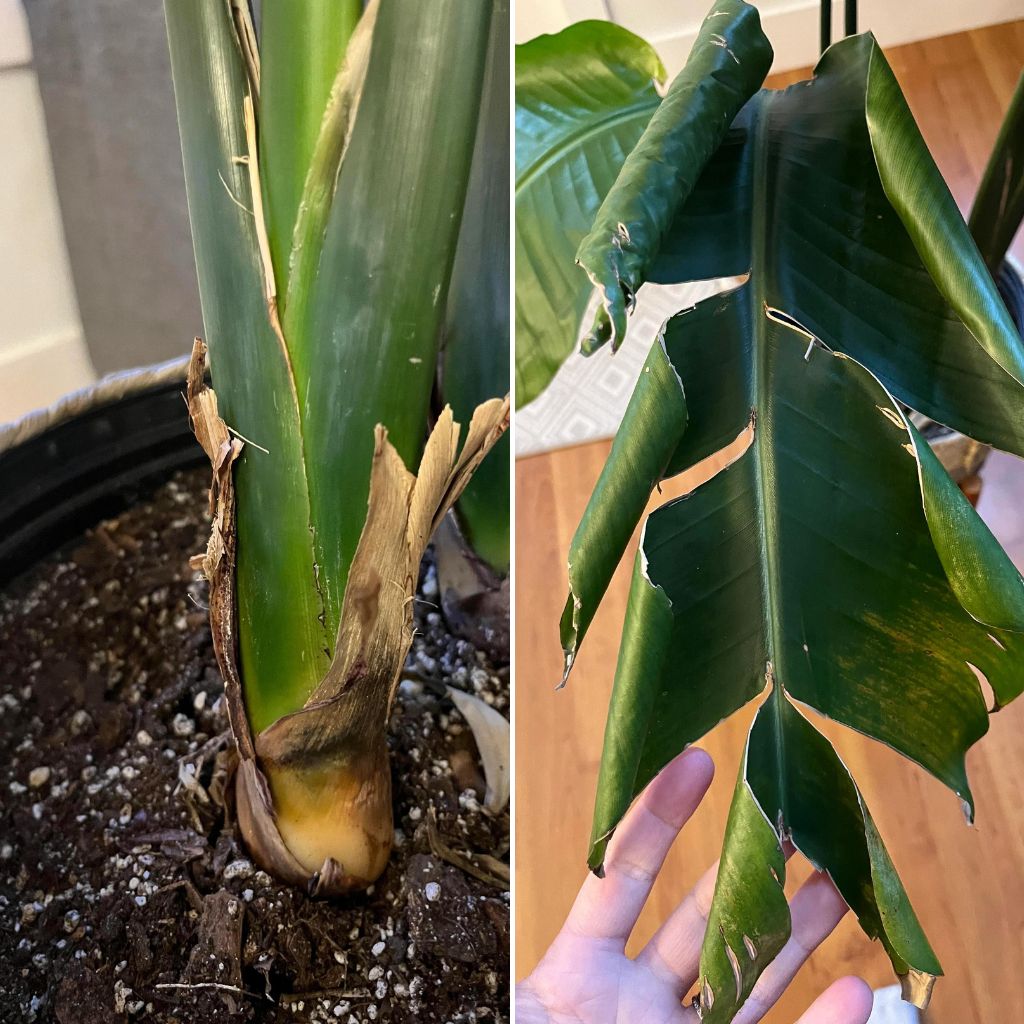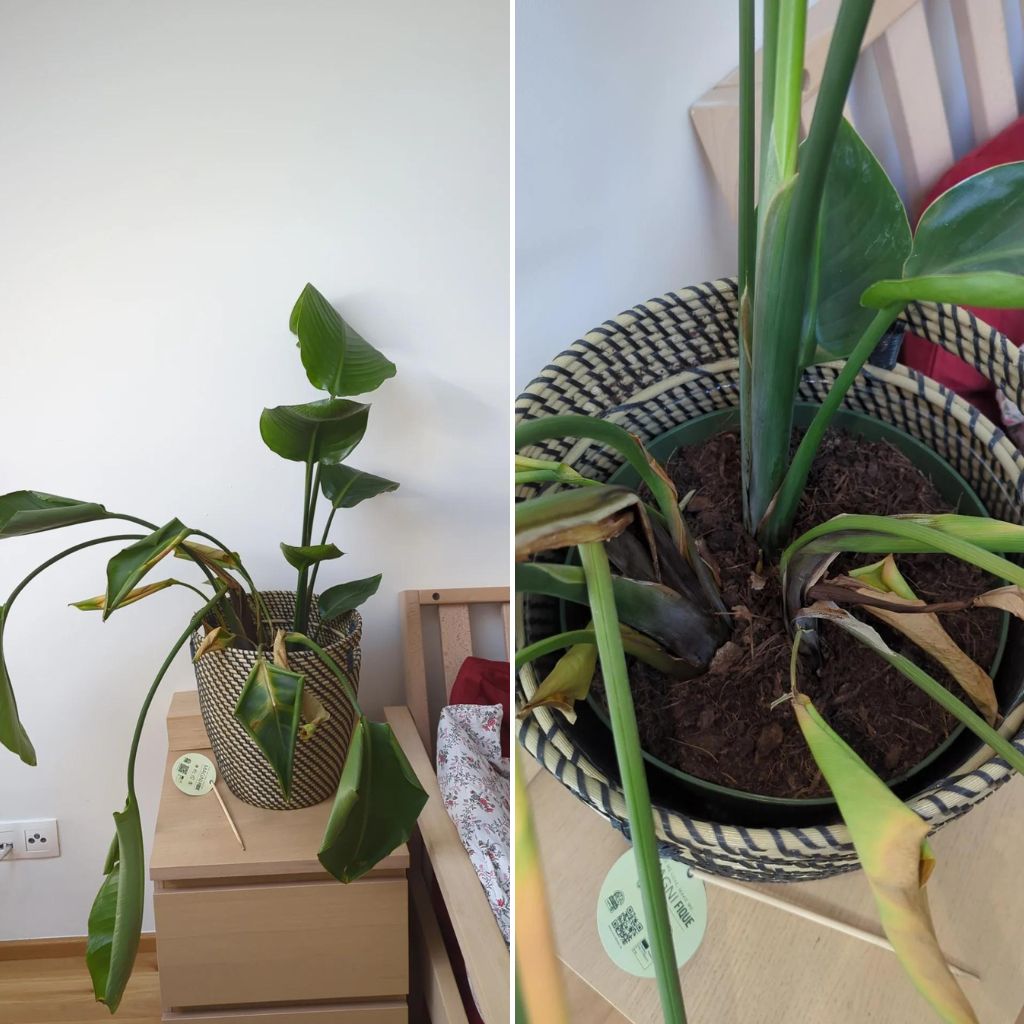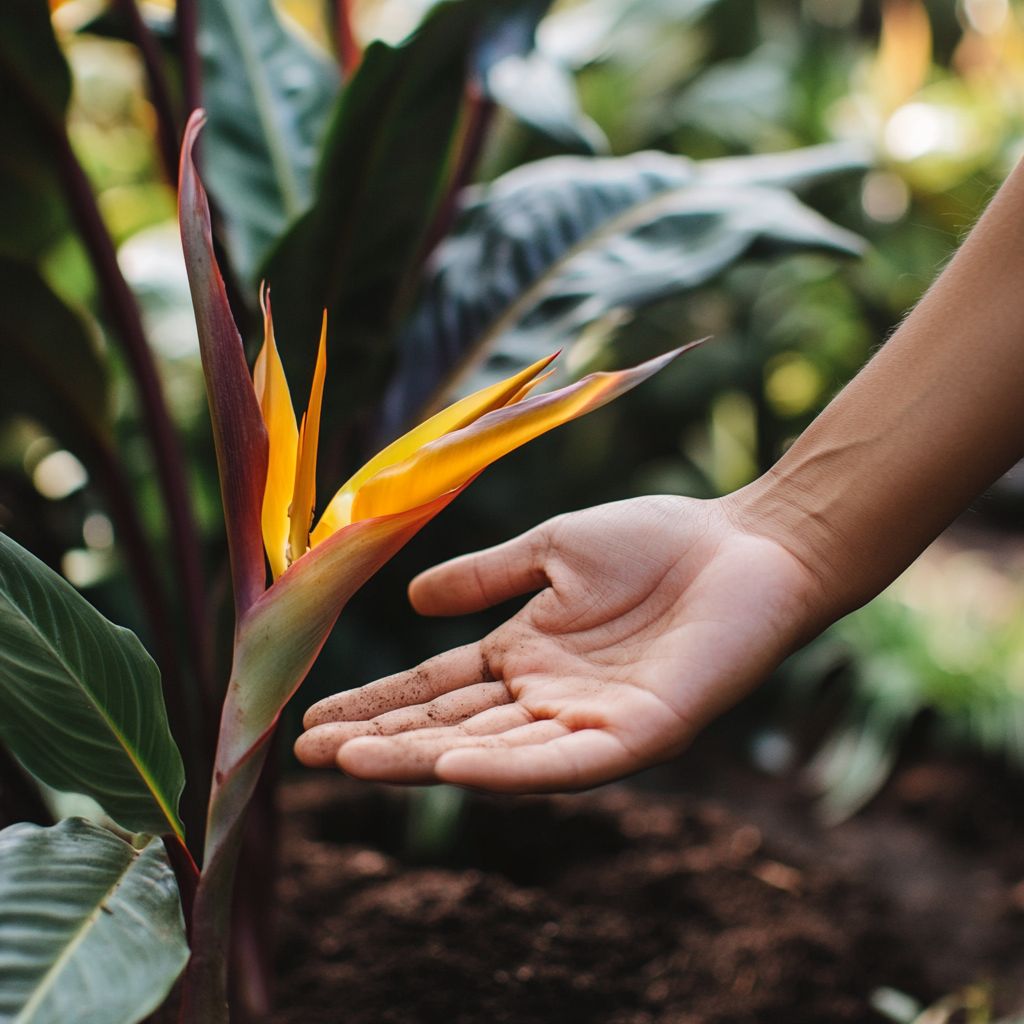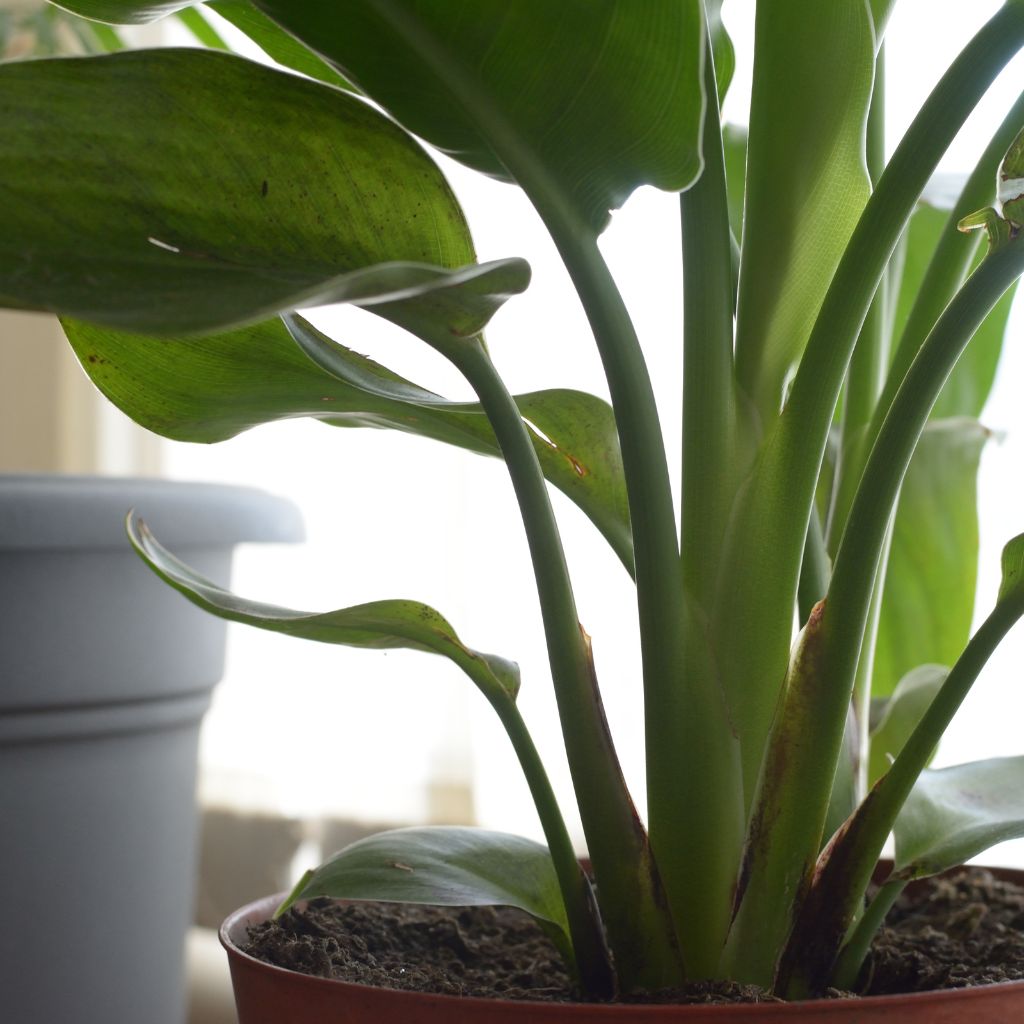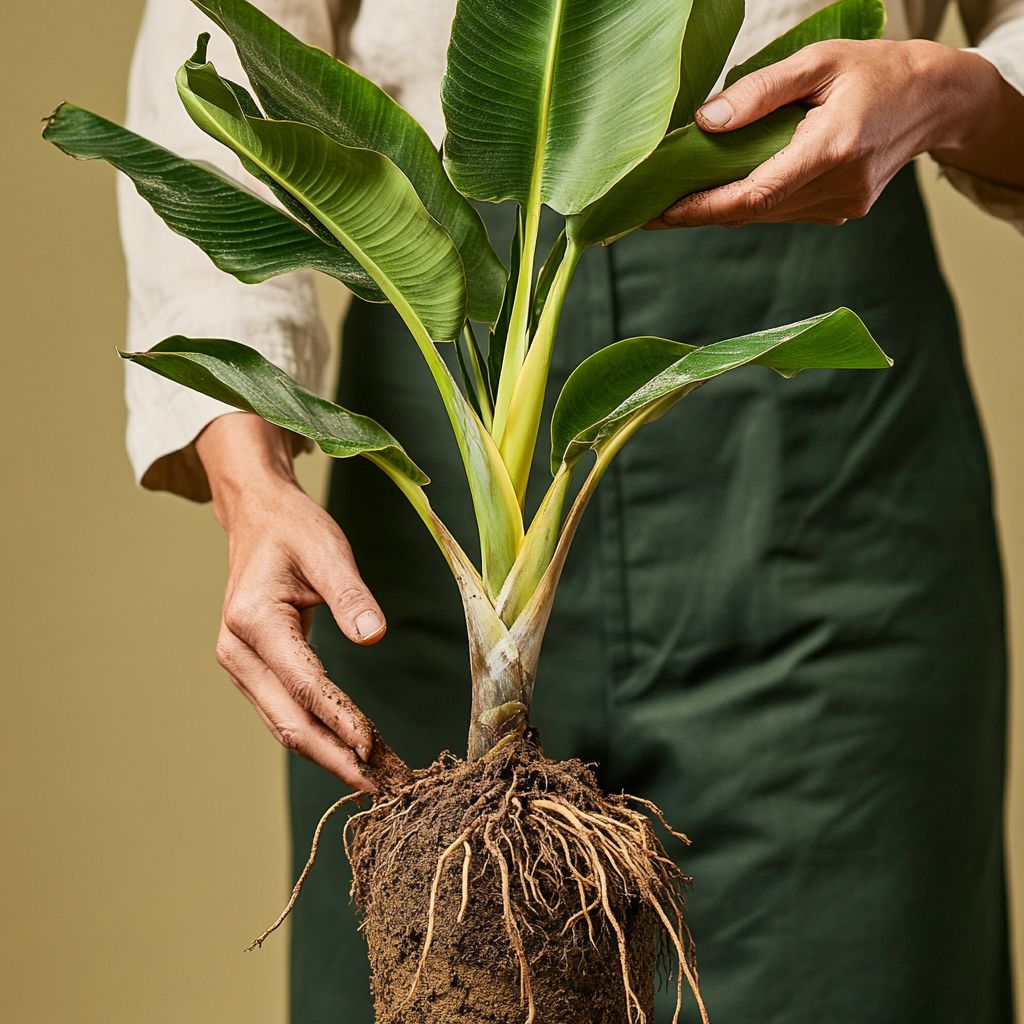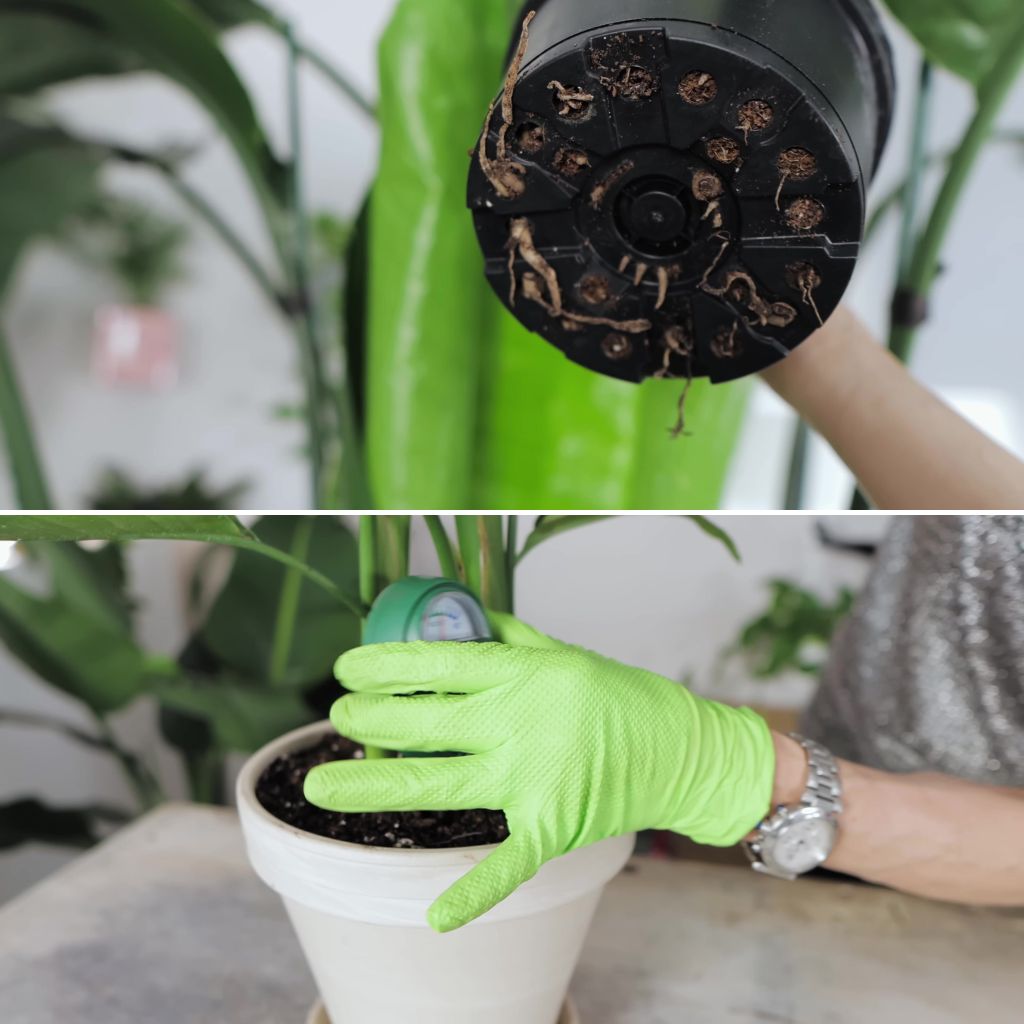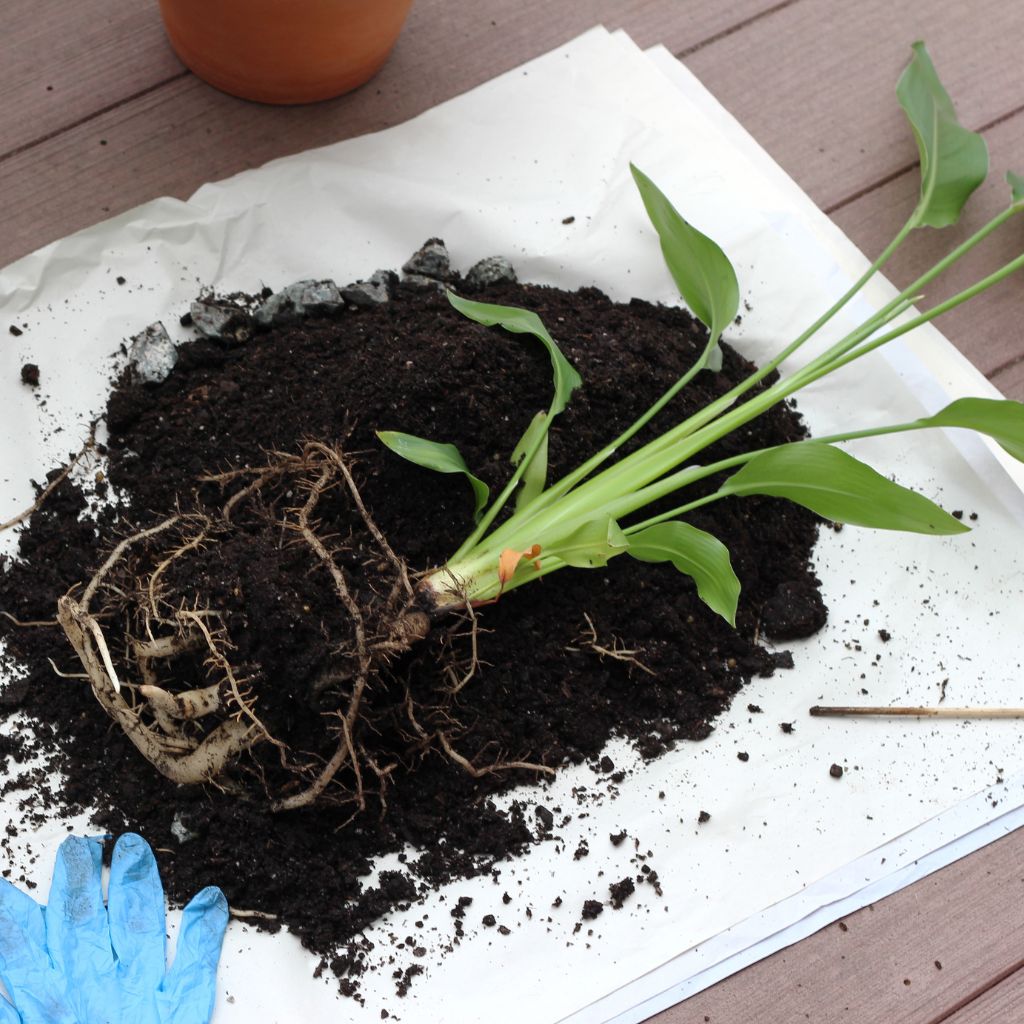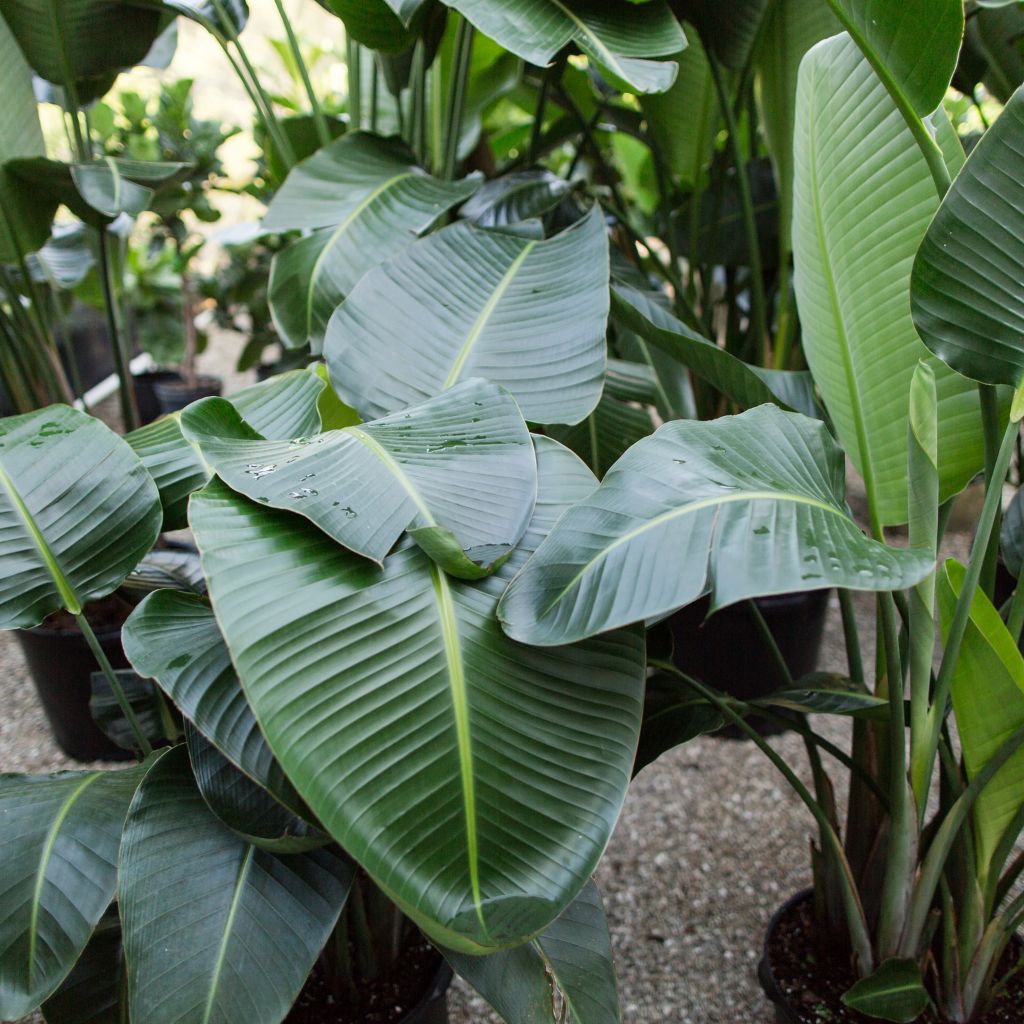The Bird of Paradise (Strelitzia nicolai) is a striking plant known for its lush foliage and stunning flowers that resemble a bird in flight.
While this tropical beauty is relatively easy to care for, one aspect of its care that often perplexes plant enthusiasts is watering. Can you overwater a Bird of Paradise?
The surprising answer is yes, and the consequences can be more severe than you might think.
In this article, we’ll explore the nuances of watering this majestic plant, including signs of overwatering, prevention tips, and how to rescue an overwatered Bird of Paradise.
Understanding the Water Needs of Bird of Paradise
The Bird of Paradise is native to the warm, humid regions of South Africa, where it thrives in well-draining soil and consistent moisture.
However, this doesn’t mean the plant enjoys sitting in waterlogged soil. In fact, maintaining the right balance of moisture is key to its health.
The plant’s large leaves and robust root system require regular watering, but too much water can lead to root rot and other issues that can severely damage or even kill the plant.
The Dangers of Overwatering
Overwatering is one of the most common mistakes in plant care, and the Bird of Paradise is no exception.
The symptoms of overwatering can be subtle at first, often mistaken for underwatering or nutrient deficiencies. However, as the problem progresses, the damage becomes more apparent and can be difficult to reverse.
Signs of Overwatered Bird of Paradise
Yellowing Leaves: One of the first signs of overwatering is yellowing leaves. While yellow leaves can indicate other issues, such as nutrient deficiencies or lack of light, when combined with wet soil, it’s a clear sign of overwatering.
Browning Leaf Tips and Edges: Overwatered plants often develop brown tips or edges on their leaves. This happens because the roots are unable to take up oxygen properly in waterlogged soil, leading to stress and cell damage in the leaves.
Wilting Despite Wet Soil: It’s counterintuitive, but an overwatered Bird of Paradise may wilt even though the soil is wet. This happens because the roots begin to rot and can no longer transport water to the rest of the plant.
Moldy or Foul-Smelling Soil: If the soil stays consistently wet, it can become a breeding ground for mold and bacteria, leading to a foul smell. This is a clear sign that the soil is too wet and not draining properly.
Root Rot: The most serious consequence of overwatering is root rot, a condition where the plant’s roots begin to decay due to lack of oxygen. Once root rot sets in, it can be challenging to save the plant.
How to Prevent Overwatering
Preventing overwatering begins with understanding the specific needs of your Bird of Paradise and adjusting your care routine accordingly. Here are some practical tips to help you avoid this common pitfall:
1. Check the Soil Before Watering
Always check the moisture level of the soil before watering your Bird of Paradise. The top two inches of soil should be dry before you water again. You can use your finger to test the soil or invest in a moisture meter for more accuracy.
2. Use Well-Draining Soil
Bird of Paradise plants prefer well-draining soil that allows excess water to escape quickly. A mix of potting soil with perlite or sand works well to ensure proper drainage. Avoid using heavy, clay-based soils that retain too much moisture.
3. Ensure Proper Pot Drainage
Make sure your plant pot has adequate drainage holes to allow excess water to flow out.
If your pot doesn’t have drainage holes, consider repotting your Bird of Paradise into one that does, or be very cautious with your watering routine.
4. Adjust Watering Frequency by Season
The water needs of the Bird of Paradise change with the seasons. In the summer, when the plant is actively growing, it will need more water.
In contrast, during the winter months, the plant’s growth slows down, and it requires much less water. Adjust your watering schedule accordingly to avoid overwatering during the plant’s dormant period.
5. Consider the Plant’s Location
Plants in brighter, warmer spots will generally need more water than those in cooler, shadier areas. If your Bird of Paradise is placed in a sunny location, you may need to water it more frequently, but always check the soil first to avoid overwatering.
Rescuing an Overwatered Bird of Paradise
If you suspect your Bird of Paradise is suffering from overwatering, it’s crucial to act quickly to save the plant. Here’s what you can do:
1. Stop Watering Immediately
The first step is to stop watering the plant to allow the soil to dry out. Moving the plant to a brighter location can help speed up the drying process, as increased light will encourage the plant to use more water.
2. Check the Roots
Carefully remove the plant from its pot and inspect the roots. Healthy roots should be firm and white.
If you find brown, mushy roots, these are signs of root rot. Trim away any damaged roots with sterile scissors.
3. Repot the Plant
If root rot is present, it’s best to repot the plant in fresh, well-draining soil. Be sure to use a clean pot with good drainage, and avoid watering the plant immediately after repotting.
Allow it to settle in its new soil for a few days before resuming a careful watering routine.
4. Provide Proper Care
After repotting, place the Bird of Paradise in a bright, well-ventilated spot. Monitor the plant closely and water only when the top two inches of soil are dry.
You may also consider using a fungicide to prevent any fungal infections from taking hold in the new soil.
The Role of Humidity and Temperature
While watering is crucial, it’s also important to consider the role of humidity and temperature in the overall health of your Bird of Paradise.
These plants thrive in warm, humid environments, similar to their native habitat. However, indoor conditions can often be much drier, particularly during the winter months when heating systems are running.
1. Maintain Adequate Humidity
Bird of Paradise plants prefer a humidity level of around 60-70%. If your home is dry, especially in winter, consider using a humidifier or placing a tray of water near the plant to increase humidity.
Misting the leaves can also help, but be careful not to overdo it, as too much moisture on the leaves can lead to fungal issues.
2. Keep Temperatures Consistent
These plants do best in temperatures between 65-80°F (18-27°C). Sudden temperature changes, such as drafts from windows or doors, can stress the plant and affect its ability to manage water.
Keep your Bird of Paradise in a stable environment away from cold drafts or direct heat sources.
Striking the Right Balance
Watering your Bird of Paradise correctly is about finding the right balance between providing enough moisture to support its lush growth and avoiding the pitfalls of overwatering.
By understanding the plant’s needs, using well-draining soil, and adjusting your care routine with the seasons, you can ensure your Bird of Paradise remains healthy and vibrant.
Remember, the key is responsiveness—paying attention to your plant’s signals and adjusting your watering practices accordingly. With the right care, your Bird of Paradise can thrive, adding a touch of tropical elegance to your home for years to come.
